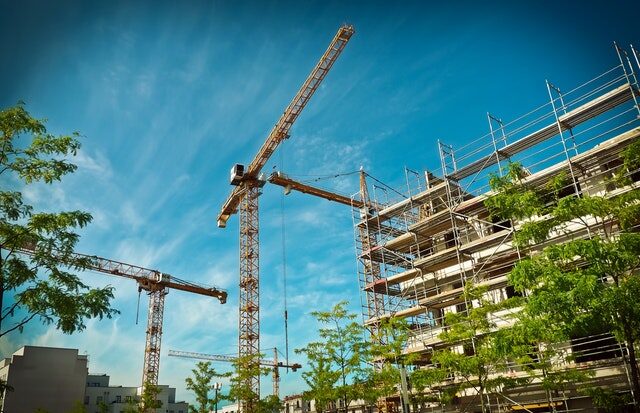the former mining town
challenges:
The city of Oer-Erkenschwick lies on the northern edge of the Ruhr area in the transition to rural areas. Ever since the coal crisis in the 1950s and the steel crisis in the 1960s, Oer-Erkenschwick, which was granted city rights in 1953, has had to deal with a continuous decline in montane-dominated industrial sectors and cope with the consequences of decreasing job offers. Even today, the unemployment rate is around 16%, because so far it has only been possible to create job alternatives in the high-tech industry or in production-oriented service sectors.
Overview aerial view Halluinstraße
With regard to population development, Oer-Erkenschwick plays a special role in the urban redevelopment of Western pilot towns: despite the massive economic structural change and job losses, the city has grown steadily in the past, with 30,700 inhabitants today. This growth in population is due to the scenic charm of the northern Emscher-Lippe region with the nearby Hohe Mark Nature Park and the favorable traffic location. New citizens are therefore also families from the central Ruhr area, who see Oer-Erkenschwick as an attractive location for their residential property. The city has responded in the past to this need with sufficient building sites for single-family and terraced house construction.
The high demand for residential property for families has been reflected in the new development areas, which are located on the outskirts of the city. The loss of attractiveness of the inner city as a shopping or residential location could not be stopped. Against this background, the beginning of the 1980s began to improve the appearance of the city center and to establish a facility with a magnetic function with the construction of a new shopping and events center. These approaches have significantly contributed to strengthening the shopping and leisure quality of the city center.
In the immediate vicinity of the city center is the “Schillerpark”, a housing development built in the mid-1970s with 221 apartments, of which 66 are senior citizens’ apartments. The complex consists of three terraced building complexes, each with nine to twelve storeys in the inner and two to four storeys in the outer building areas. As an example of the multi-storey social housing construction of the 1970s, the “Schillerpark” is an urban foreign object whose metropolitan form of living is no longer in demand today and has developed into a social focal point. A partial demolition of the housing complex is inevitable after examination of numerous alternatives by the owner – the Vestisch-Märkische Wohnungsbaugesellschaft mbH (VMW).
Block of flats Halluinstraße 10
The city of Oer-Erkenschwick is faced with the challenge of shaping the structural change from a mining and industrial city to a residential and recreational city. In the medium term, the task will be to find urban and functional solutions for dealing with a large inner-city mining area and to rehabilitate the inner-city housing estate “Schillerpark” through partial demolition and thereby strengthen the attractiveness of the inner city as a residential location.

